2 Days in Valletta: A Guide to Malta’s Capital City
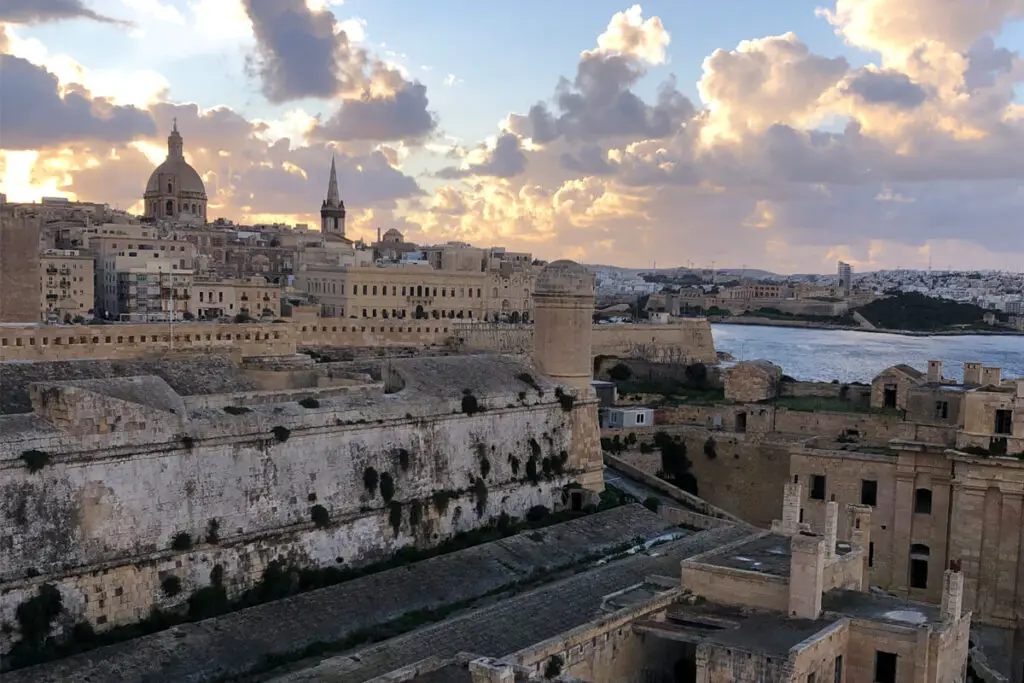
Valletta is a UNESCO world heritage site and a must visit. The fortified city offers a unique blend of rich history with 320 monuments, stunning architecture, and beautiful views. Visitors can explore the city’s ancient forts, palaces, churches and museums, stroll through its picturesque streets, and sample delicious cuisine.
Two days is the ideal amount of time to explore Valletta without feeling rushed or overwhelmed. Within this timeframe, you can see all the main sights, including St. John’s Co-Cathedral, the Grandmaster’s Palace, and the Upper Barrakka Gardens. You can also take in the stunning views of the Grand Harbour and enjoy some of the delicious cuisine.
Valletta is for anyone that appreciates history, and not particularly suitable for younger children. Of course there are other places around Malta that have kids activities you can look into.
Once you are travelling to Malta you will likely come over for several days. So here is a 4-day itinerary and 7-day itinerary that also include Valletta for some inspiration.
Visiting Valletta
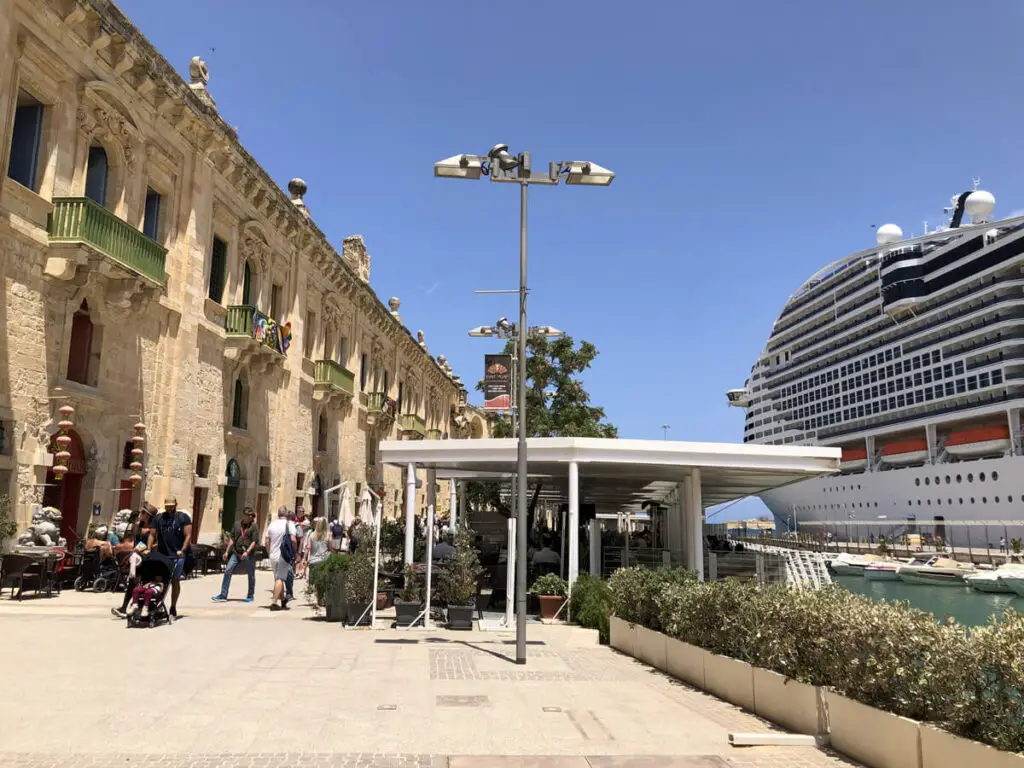
You could see Valletta in a day. However you would either need to go through the sites quickly or limit the sites you see to the top 3 sites. If you would like to get around Valletta quicker you could opt to visit Valletta using a Segway or. Alternatively there is the Malta Fun train which departs from in front of St John’s Co-Catheral.
However, Valletta is incredibly walkable, measuring only 1.2km by 700 meters at its widest and mostly pedestrianised. As a result you can easily walk from Valletta Gate to Fort St Elmo on the other side within 17 minutes.
To compete your visit of Valletta you may want to dine in one of the many restaurants in Valletta. There is also Valletta Waterfront where many locals go, and it is easily accessible using the lift in the Upper Barrakka Gardens. However if you want a more luxury experience, there are many boutique hotels within Valletta that will serve up a delicious meal.
Now, its time for the top list of sites you should definitely visit in Valletta. Let’s delve right in!
1. St John’s Co-Cathedral
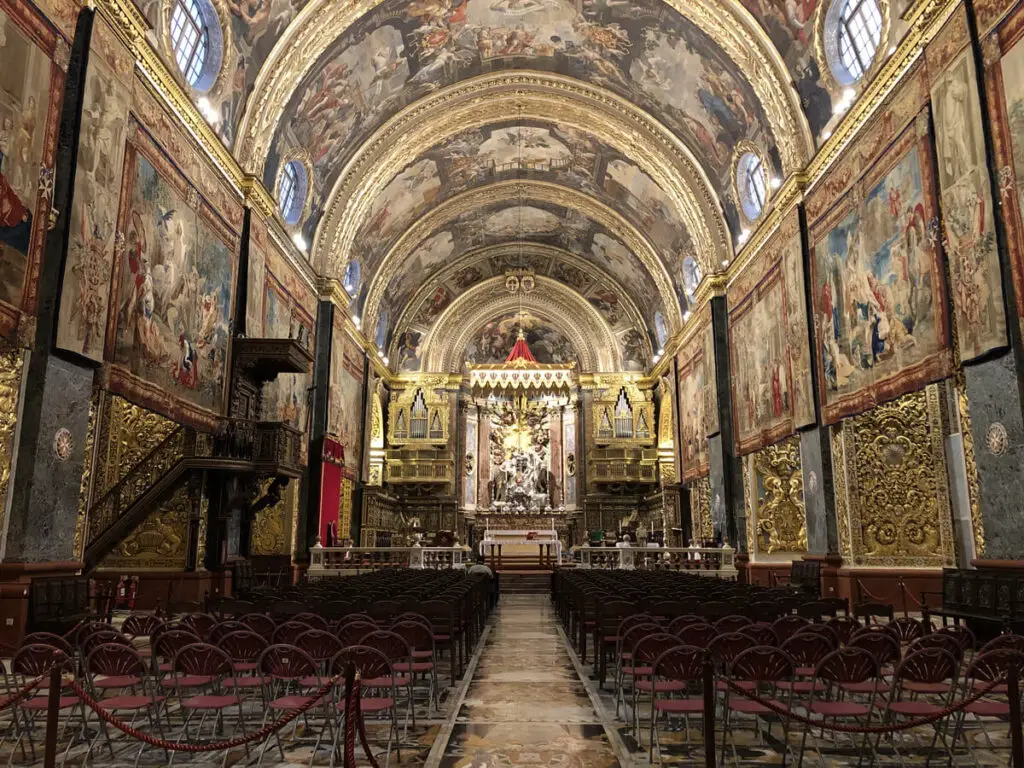
St John’s Co-Cathedral is a stunning baroque masterpiece in the heart of Valletta. It was built between 1573 and 1578 and originally dedicated to Saint John the Baptist, the patron saint of the Knights Hospitaller (the Order of St. John).
The cathedral’s interior is breathtaking. It is covered in ornate carvings, beautiful frescoes, and an incredible display of artwork. Among the highlights of the cathedral is the Chapel of the Langue of Italy. The Langue is dedicated to St. Catherine of Alexandria and decorated in marble and gold.
Another noteworthy feature is the cathedral’s floor. It is made up of hundreds of inlaid marble tombstones, many belonging to knights who served in the Order of St. John.
Visitors can also marvel at the cathedral’s intricate ceiling paintings. They are by the famous Italian artist Mattia Preti and depict scenes from the life of St. John the Baptist. The cathedral is also home to the most famous painting in Malta – “The Beheading of St. John the Baptist” by Caravaggio. You can view the painting in the Oratory of the Co-Cathedral.
If you want to learn more about the cathedral’s history and significance, there is a four-hour guided walking tour of Valletta that has an optional visit to the cathedral. In the tour you will get the opportunity to wander among beautifully preserved medieval and baroque buildings. Moreover you will also get to enjoy breathtaking views from the Upper Barrakka Gardens.
Overall, St John’s Co-Cathedral is a must-visit for anyone traveling to Malta. Its rich history, stunning artwork, and impressive architecture make it one of the most important cultural and religious landmarks in the country.
Additionally with the option of the guided walking tour of Valletta, visitors can get a comprehensive understanding of the cathedral’s place within the city’s rich cultural heritage.
2. Grand Masters Palace
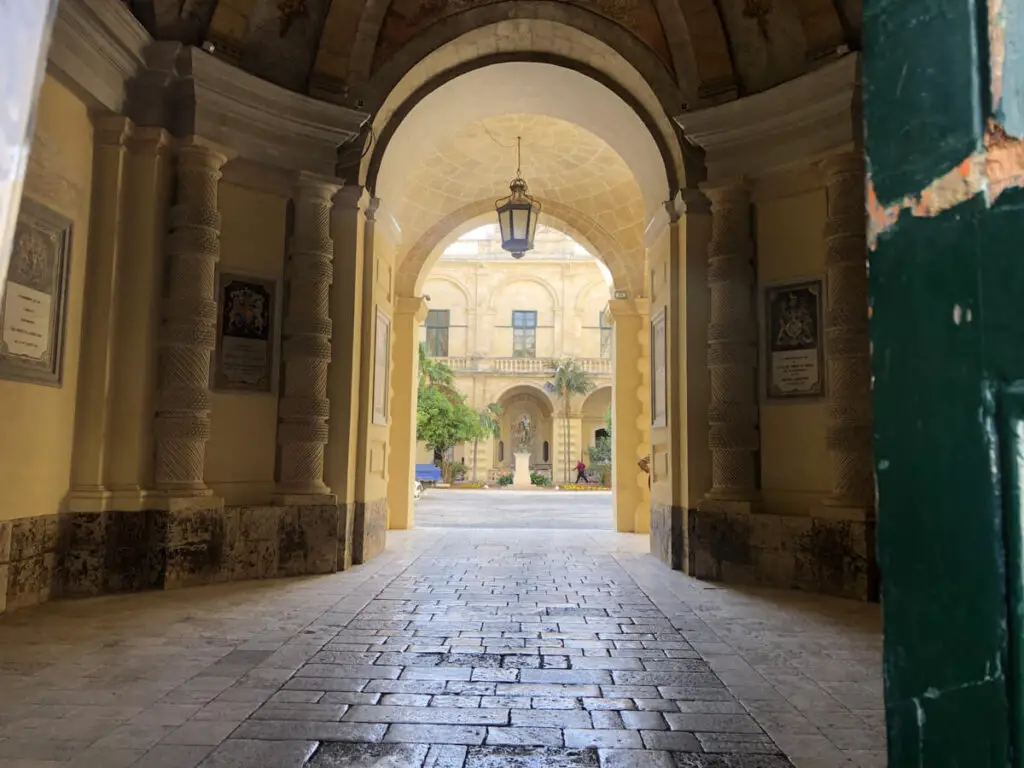
The Grandmaster’s Palace in Valletta is a majestic building that served as the residence of the Grand Master of the Knights of St. John. The Knights built it in the late 16th century and although the façade isn’t in any way impressive, it is stunning inside.
Inside, the palace’s there are opulent rooms you can explore. They include the State Room, which were used for formal receptions and ceremonies. The rooms are adorned with elaborate frescoes, chandeliers, and antique furnishings.
One of the highlights of the palace is the Armoury. It houses a fascinating collection of arms and armour used by the Knights of St. John in the 16th century.
Another interesting feature of the palace is the Tapestry Chamber. Here are a series of 18th-century Flemish tapestries that depict scenes from the life of Julius Caesar. The tapestries are incredibly detailed and provide a fascinating glimpse into the past.
The palace also has a beautiful courtyard, featuring a central fountain surrounded by arcades. Back in the day, the courtyard was used for various events and ceremonies. Many dignitaries were welcomed here and prisoners were presented to the Grand Master.
Today, the Grandmaster’s Palace serves as the office of the President of Malta. It also houses the House of Representatives and the Office of the Prime Minister. Despite its modern-day use, the palace remains a testament to Malta’s rich history and cultural heritage.
3. Upper Barrakka Gardens and Saluting Battery
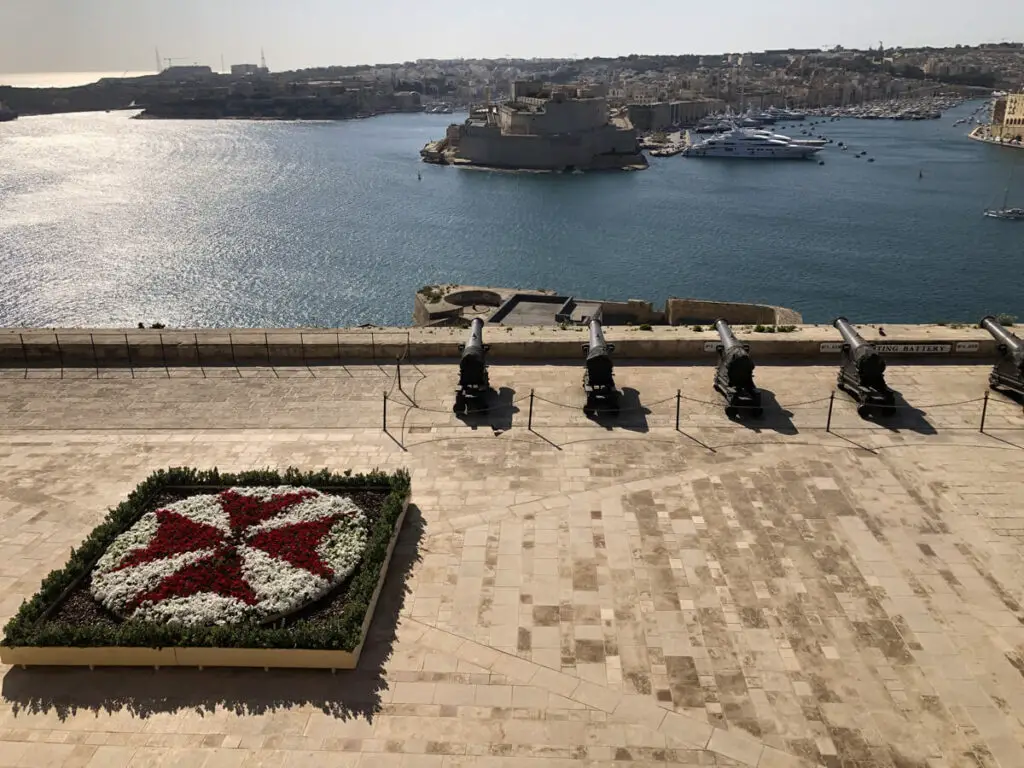
The Upper Barrakka Gardens in Valletta are a popular attraction that offer breathtaking views of the Grand Harbour. In fact I’ve also featured the Grand Harbour in the top spot of the most beautiful places in the Maltese Islands.
The gardens were originally built in the 17th century as a place for the Knights of St. John to relax and enjoy the scenery. Today, visitors can stroll through the gardens and admire the beautiful fountains, sculptures, and colorful flowers. The gardens also offer stunning panoramic views of the harbour, including views of the Three Cities and Fort St. Angelo.
Adjacent to the gardens is the Saluting Battery, which was built in the 16th century to defend the harbor. Today, the battery is still used to fire ceremonial salutes, which take place every day at noon and 4 pm.
Visitors can witness the salutes and learn about the history of the battery from the knowledgeable guides on site. The guides explain the history and significance of the salutes, which have been a tradition in Valletta for centuries.
In addition to the salutes, the battery also offers visitors the chance to explore the historic gun emplacements and view the impressive collection of artillery on display. Visitors can see cannons that date back to the 16th century, as well as more modern weapons that were used during World War II.
4. Casa Rocca Piccola
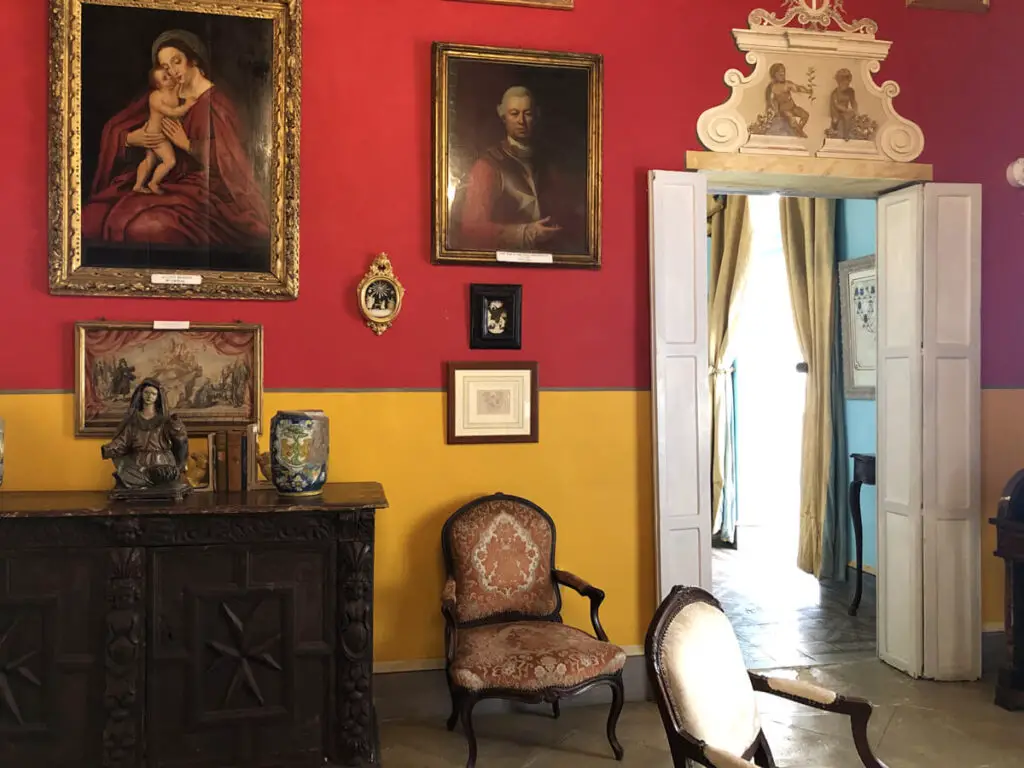
Casa Rocca Piccola is a stunning 16th-century palace in Valletta. The palace was originally built for a noble Maltese family and is still owned by their descendants today.
The palace has been beautifully preserved and offers visitors a unique glimpse into the lives of Malta’s nobility. Visitors can explore the palace’s luxurious interiors, which include stunning chandeliers, antique furniture, and beautiful frescoes.
You can check out the palace website to get more of glimpse inside the palace. If you are looking for a luxury stay, you can even opt to stay at the Casa Rocca Piccola B&B.
One of the palace’s most interesting features is its underground air raid shelters, which were used during World War II. The shelters were used to protect the palace’s residents and their guests from the bombings that took place during the war.
Visitors can take a guided tour of the palace, which offers a fascinating insight into the history and culture of Malta. The tour includes a visit to the palace’s chapel, which is decorated with beautiful religious art and artifacts.
The palace’s stunning gardens are also not to be missed. The gardens feature a variety of exotic plants and flowers, as well as a charming fountain and a fish pond.
5. Manuel Theatre
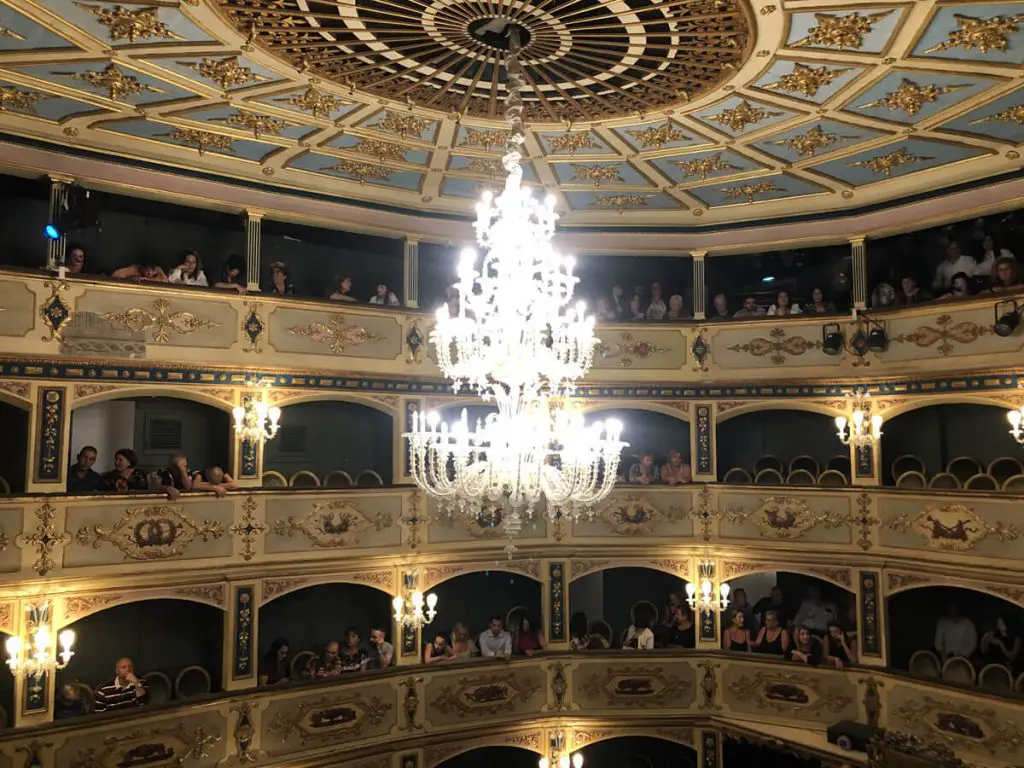
The Manoel Theatre is a historic theater in Valletta, built in 1731. The theater has been beautifully preserved and is still in use today, hosting a variety of plays, operas, and other cultural events.
Visitors can tour the theater and learn about its fascinating history. The tour includes a visit to the theater’s backstage areas, as well as a chance to see the theater’s ornate decorations and stunning architecture up close. The cost for the tour is €5 per person, making it an affordable and interesting option for tourists.
Alternatively, visitors can attend a show at the theater and experience the magic of the Manoel firsthand. The theater’s schedule includes a variety of performances, from classical concerts to contemporary theater productions.
The Manoel Theatre is also home to the Malta Philharmonic Orchestra, which performs regular concerts at the venue. The orchestra has a reputation for excellence and has won numerous awards for its performances.
6. Fort St Elmo
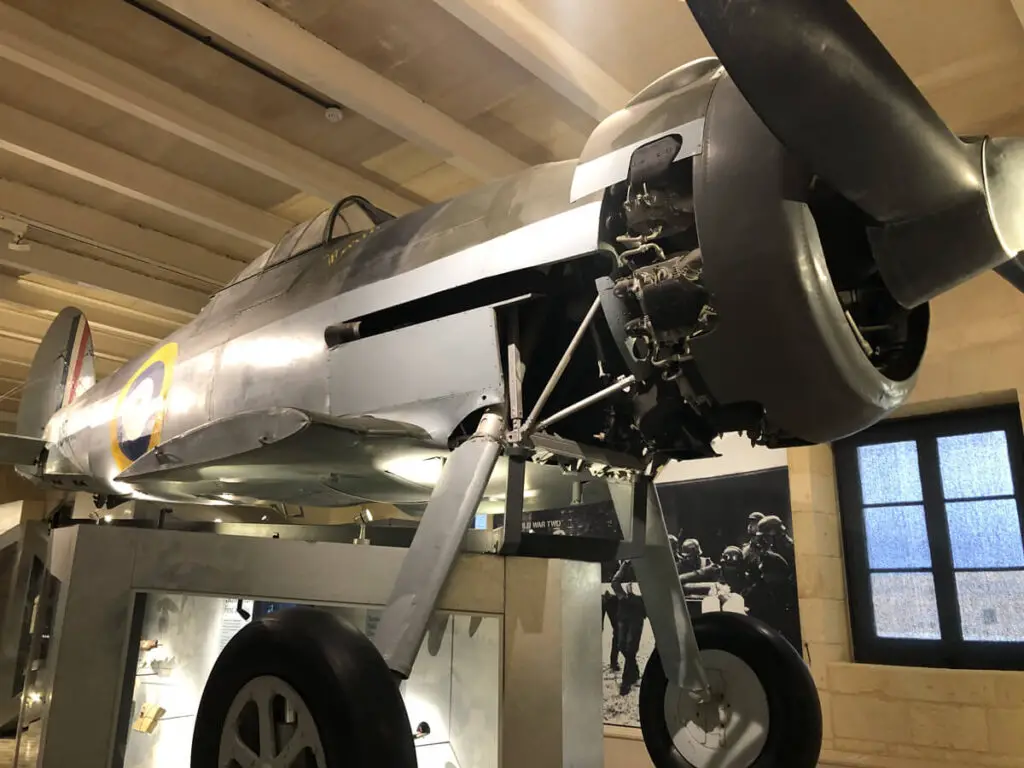
Fort St Elmo is a historic fortress located in Valletta, Malta. The fortress was built in the 16th century and played a key role in the Great Siege of Malta in 1565.
The fortress has been beautifully preserved and offers visitors a fascinating insight into Malta’s military history. Visitors can explore the fort’s ramparts and bastions, which offer stunning views of the city and the harbor.
The fort is home to the National War Museum, which displays a variety of artifacts and exhibits related to Malta’s military history. The museum includes exhibits on the Great Siege of Malta, World War I and II, and Malta’s role in the British Empire.
Visitors can also tour the fort’s underground tunnels, which were used for storage and defense during times of war. The tunnels offer a unique and immersive experience, allowing visitors to imagine what life was like for soldiers stationed at the fort.
The fort also hosts regular events and exhibitions, showcasing the work of local artists and performers. Visitors can attend concerts, art exhibitions, and other cultural events in this historic and atmospheric setting.
Overall, Fort St Elmo is a must-visit attraction in Valletta, offering visitors a unique insight into Malta’s military history and a chance to explore one of the city’s most impressive landmarks. Whether you are interested in history, culture, or simply want to enjoy some stunning views of Valletta, Fort St Elmo is not to be missed.
Related Articles
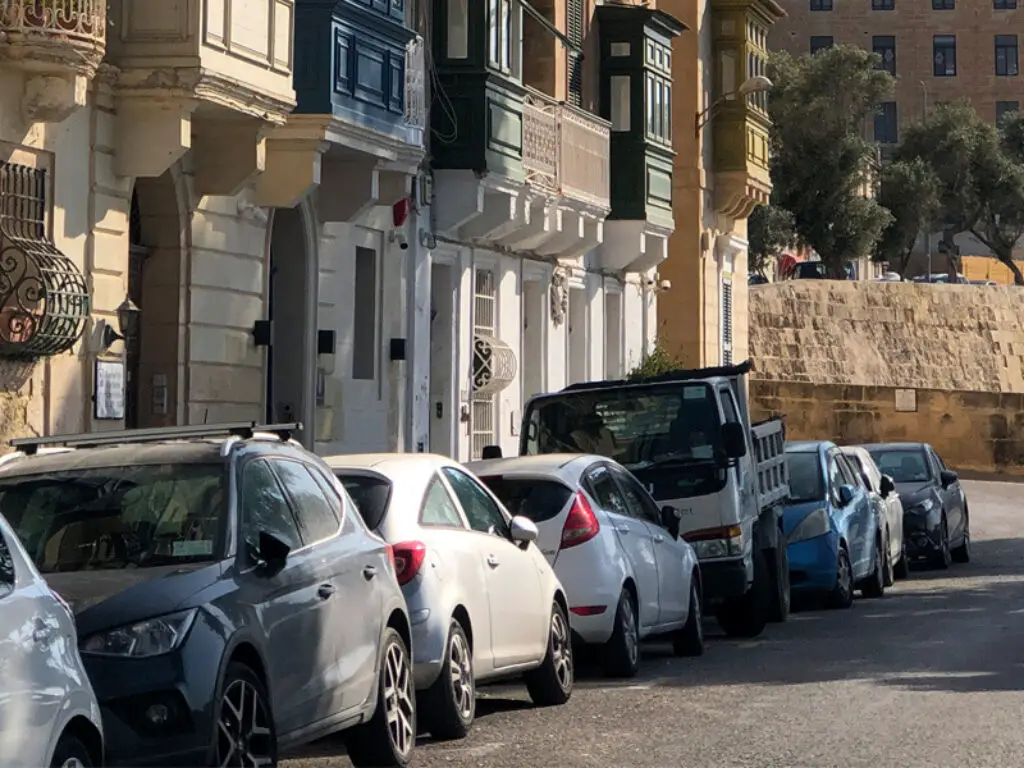
Driving Into Valletta: Parking, Fees, and Access Regulations
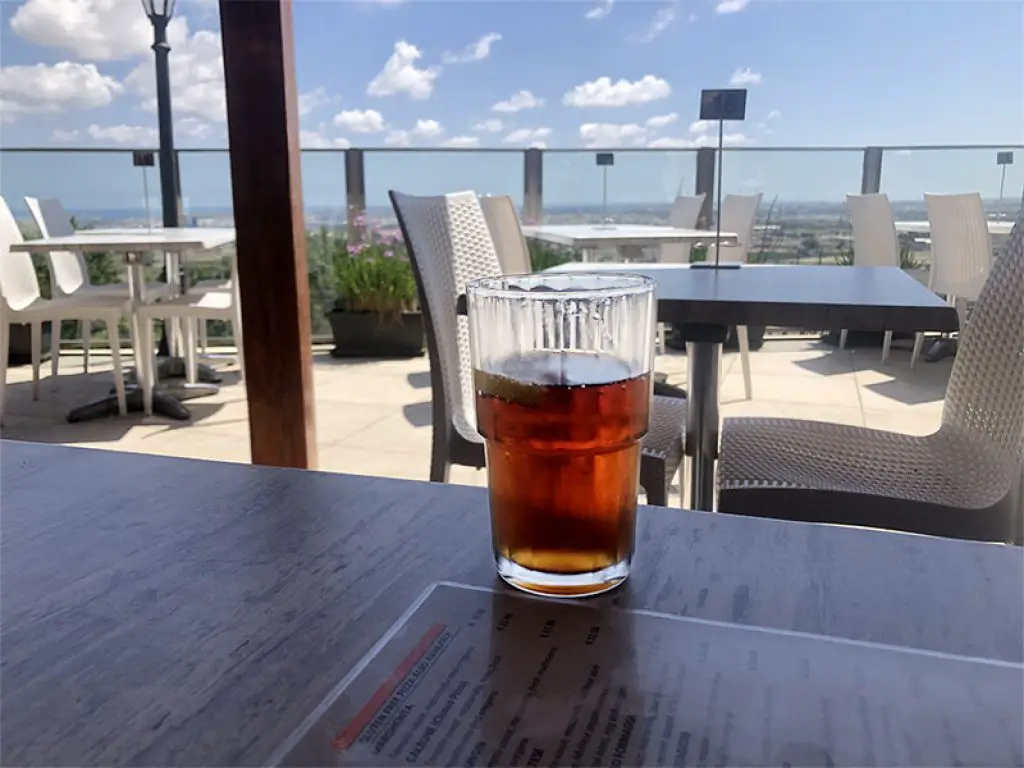
Cheers! A Guide to Maltese Drinks
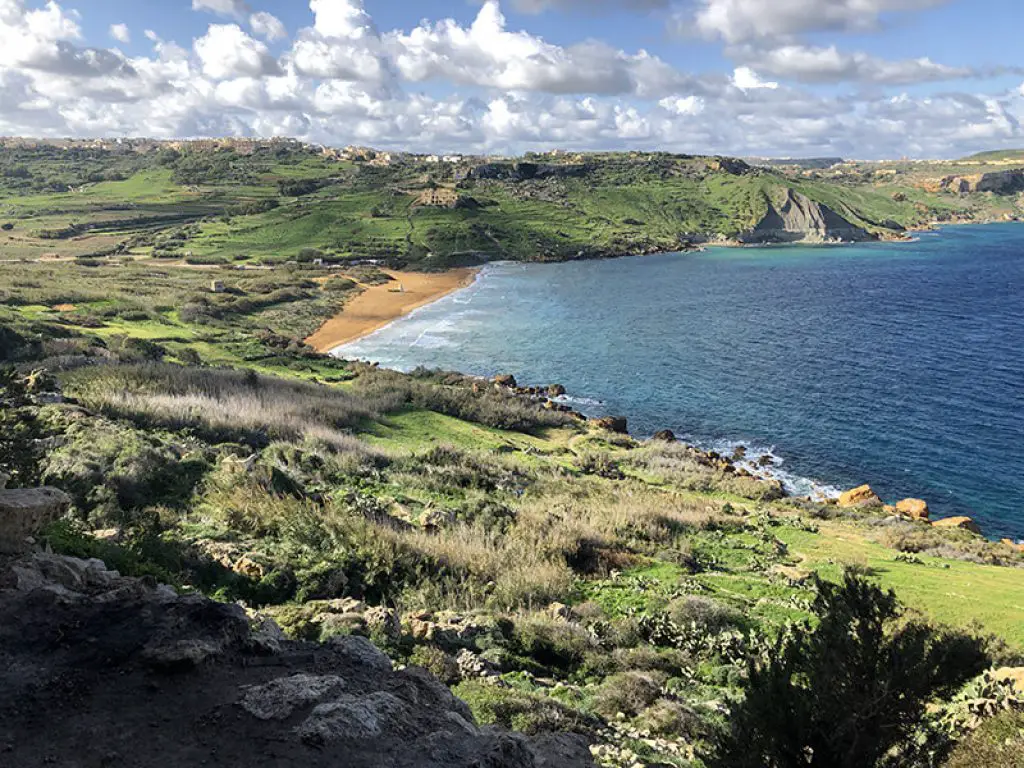
12 Activities in Gozo for Older Kids and Adults